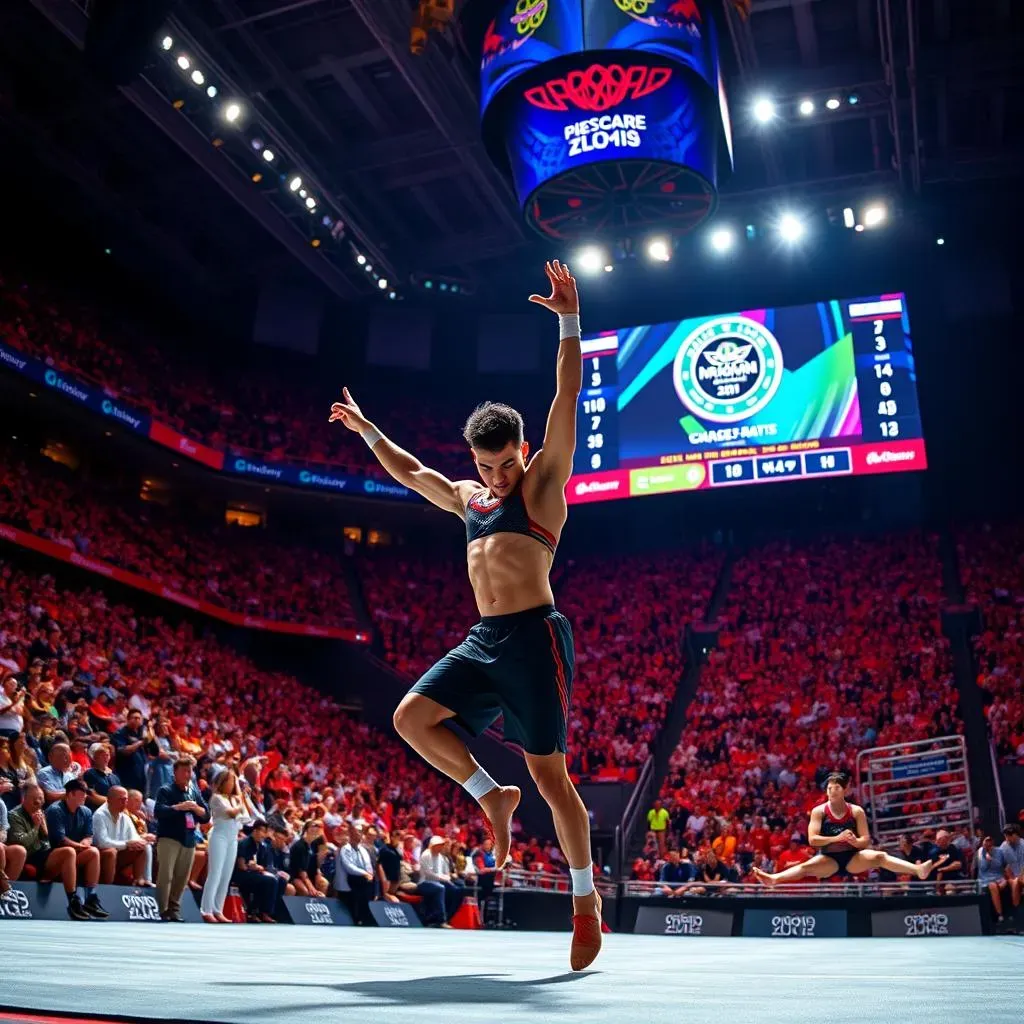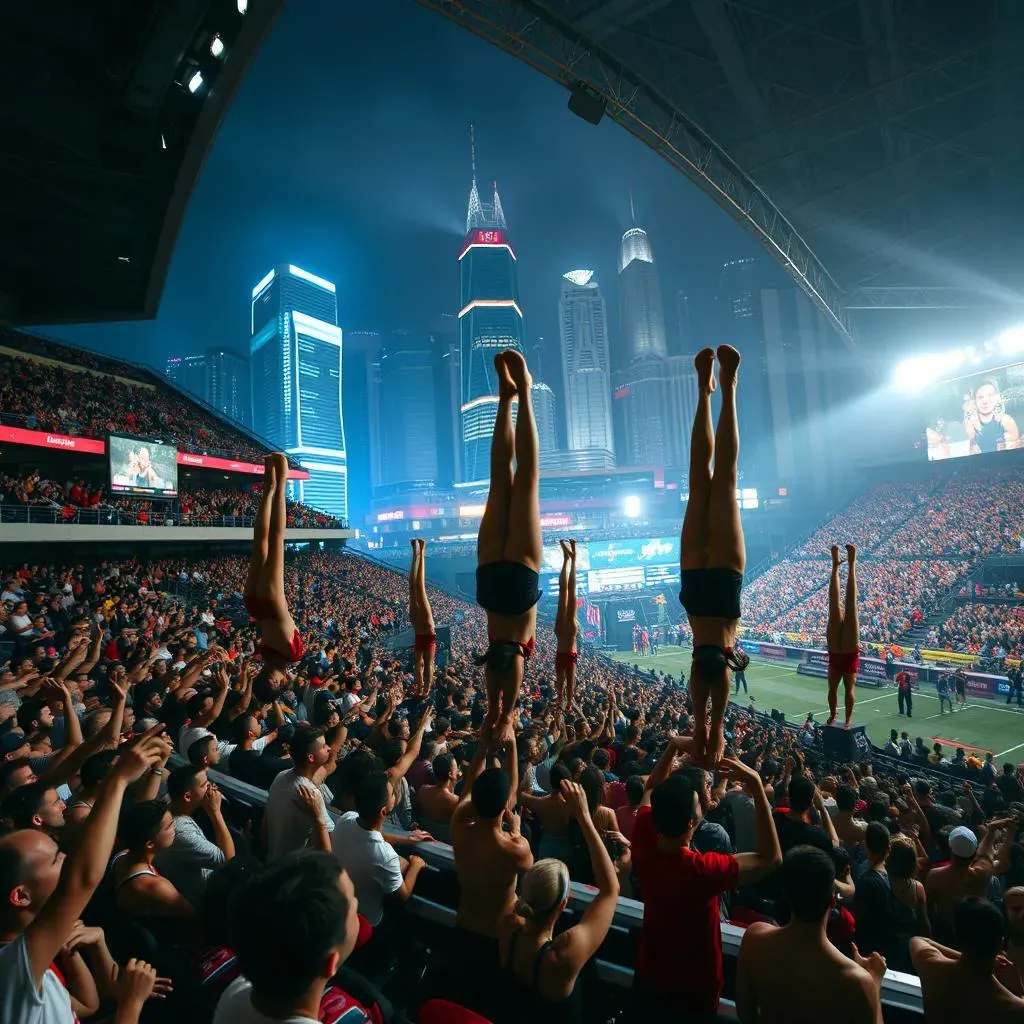Table of Contents
Welcome to the world of calisthenics competition, where strength, agility, and endurance are put to the ultimate test. Calisthenics, a form of exercise that uses body weight as resistance, has evolved into a global phenomenon, with competitions sprouting up around the world. The World Street Workout and Calisthenics Federation (WSWCF) is at the forefront of this movement, organizing events that showcase the best of the best in calisthenics. In this article, we'll delve into the world of calisthenics competition, exploring what it entails, the different types of competitions, and the benefits of participating. Whether you're a seasoned athlete or just starting out, this guide will provide you with the insights and tips you need to succeed in the calisthenics competition scene. From the rules and regulations to training strategies, we'll cover it all, giving you a comprehensive understanding of what it takes to excel in this exhilarating sport. So, let's dive in and discover the thrill of calisthenics competition!
What is Calisthenics Competition?

What is Calisthenics Competition?
Introduction to Calisthenics
Calisthenics is a form of exercise that uses body weight as resistance to build strength, endurance, and flexibility. It involves a variety of movements such as push-ups, squats, lunges, and planks, which can be modified to suit different fitness levels. Calisthenics has gained popularity worldwide due to its accessibility and effectiveness, requiring no special equipment or gym membership.
As calisthenics continues to grow in popularity, competitive events have emerged, providing a platform for athletes to showcase their skills and push their limits. Calisthenics competitions have become a thrilling spectacle, with participants performing intricate routines that demonstrate their strength, agility, and creativity.
Competition Category | Description | Examples |
|---|---|---|
Freestyle | Performing a routine that showcases strength, flexibility, and creativity | Handstand push-ups, muscle-ups, human flag |
Power and Strength | Demonstrating raw strength and endurance | Max pull-ups, squats, lunges |
Endurance | Testing cardiovascular endurance and stamina | Long-distance running, burpees, jump squats |
Competition Formats
Calisthenics competitions come in various formats, each with its unique rules and requirements. Some competitions focus on freestyle routines, where athletes perform a choreographed sequence of movements showcasing their creativity and skill. Others focus on power and strength, where athletes are judged on their ability to perform a maximum number of repetitions of specific exercises.
The World Street Workout and Calisthenics Federation (WSWCF) is one of the governing bodies that organize international competitions, providing a platform for athletes to compete and showcase their talents. These competitions not only promote physical fitness but also foster a sense of community and camaraderie among participants.
- Freestyle Calisthenics: Judges score based on technique, creativity, and overall performance
- Power and Strength Calisthenics: Athletes are judged on their ability to perform a maximum number of repetitions
- Endurance Calisthenics: Cardiovascular endurance and stamina are put to the test
Types of Calisthenics Competitions: Rules and Regulations

Types of Calisthenics Competitions: Rules and Regulations
Introduction to Competition Rules
Calisthenics competitions have evolved over the years, with various formats and rules being introduced to cater to different aspects of the sport. The World Street Workout and Calisthenics Federation (WSWCF) is one of the primary governing bodies that oversee these competitions, ensuring fairness and consistency across events.
Each competition type has its unique set of rules, judging criteria, and requirements. For instance, freestyle competitions focus on the artistic and creative aspect, while power and strength competitions emphasize raw power and endurance. Understanding these rules is crucial for athletes to prepare and perform at their best.
Competition Type | Judging Criteria | Examples of Exercises |
|---|---|---|
Freestyle | Technique, Creativity, Overall Performance | Handstand push-ups, Muscle-ups, Human Flag |
Power and Strength | Maximum Repetitions, Proper Form | Pull-ups, Dips, Squats |
Endurance | Cardiovascular Endurance, Stamina | Burpees, Jump Squats, Mountain Climbers |
Competition Formats and Scoring
Calisthenics competitions can be held in various formats, including individual and team events. The WSWCF has established a point system for scoring, which varies depending on the competition type. For freestyle events, judges evaluate athletes based on technique, creativity, and overall performance. In power and strength competitions, athletes are scored on the number of repetitions they complete within a set timeframe.
The scoring system is designed to ensure fairness and transparency. Athletes are awarded points based on their performance, and the winner is determined by the total points accumulated. Understanding the scoring system is essential for athletes to strategize their routines and maximize their scores.
- Freestyle Scoring: Technique (40%), Creativity (30%), Overall Performance (30%)
- Power and Strength Scoring: Maximum Repetitions (70%), Proper Form (30%)
- Endurance Scoring: Completion Time (50%), Technique (30%), Stamina (20%)
Regulations and Safety Considerations
Safety is a top priority in calisthenics competitions. The WSWCF has implemented strict regulations to ensure athletes' safety, including warm-up routines, proper equipment usage, and injury reporting. Athletes are also required to undergo medical check-ups before competing.
Additionally, the WSWCF promotes fair play and sportsmanship among athletes. Any form of doping, harassment, or unsportsmanlike behavior is strictly prohibited and may result in disqualification or penalties.
Preparing for Calisthenics Competition: Tips and Strategies

Preparing for Calisthenics Competition: Tips and Strategies
Building a Strong Foundation
To prepare for a calisthenics competition, it's essential to build a strong foundation of overall fitness. This includes cardiovascular endurance, muscular strength, and flexibility. A well-rounded training program should incorporate a mix of cardio exercises, strength training, and flexibility workouts. For cardio, activities like running, cycling, or swimming can help improve endurance. Strength training should focus on exercises that work multiple muscle groups at once, such as squats, deadlifts, and bench dips.
Flexibility is also crucial, as it allows for a full range of motion and helps prevent injuries. Incorporate stretching exercises into your daily routine, focusing on major muscle groups like hamstrings, quadriceps, and chest muscles. A good flexibility program will improve your overall performance and reduce the risk of injury.
Exercise | Sets | Repetitions |
|---|---|---|
Squats | 3 | 12-15 |
Push-ups | 3 | 12-15 |
Lunges | 3 | 12-15 (per leg) |
- Incorporate cardio exercises 2-3 times a week
- Focus on compound exercises for strength training
- Stretch for 10-15 minutes after each workout
Advanced Training Techniques
Once you have a solid foundation, it's time to incorporate more advanced techniques into your training. For freestyle competitions, practice complex movements like handstand push-ups, muscle-ups, and human flags. These exercises require precision, control, and practice to master.
For power and strength competitions, focus on building explosive power through plyometric exercises like box jumps and burpees. Increasing your power will help you perform more reps in less time, giving you an edge in competition.
Exercise | Sets | Repetitions |
|---|---|---|
Handstand Push-ups | 3 | 8-12 |
Muscle-ups | 3 | 8-12 |
Box Jumps | 3 | 12-15 |
- Practice freestyle movements 2-3 times a week
- Incorporate plyometric exercises for power training
- Focus on proper form and technique to avoid injury
Calisthenics Competition Benefits: Why You Should Get Involved

Calisthenics Competition Benefits: Why You Should Get Involved
Physical and Mental Benefits
Participating in calisthenics competitions offers numerous physical and mental benefits. Physically, calisthenics helps improve strength, flexibility, and cardiovascular endurance. Regular practice can lead to weight loss, increased muscle mass, and enhanced overall fitness. Mentally, the discipline required to train for competitions builds resilience, focus, and self-confidence.
Moreover, the calisthenics community is known for its supportive and motivating environment. Training with like-minded individuals fosters camaraderie and accountability, helping athletes stay motivated and driven to reach their goals. Whether you're a seasoned athlete or a beginner, calisthenics competitions provide a platform to challenge yourself and celebrate your achievements.
Physical Benefits | Mental Benefits | Social Benefits |
|---|---|---|
Increased Strength and Flexibility | Improved Focus and Concentration | Sense of Community and Belonging |
Weight Loss and Improved Cardiovascular Health | Enhanced Self-Confidence and Resilience | Opportunities to Meet New People and Make Friends |
- Improved Overall Fitness
- Enhanced Mental Well-being
- Increased Motivation and Accountability
Personal Growth and Development
Participating in calisthenics competitions can be a transformative experience that extends beyond physical benefits. The journey to competition readiness requires dedication, perseverance, and hard work, leading to significant personal growth and development. Athletes learn to set and achieve goals, overcome obstacles, and develop a growth mindset.
Moreover, the process of training for a competition helps athletes develop valuable life skills such as time management, discipline, and self-awareness. These skills are transferable to other areas of life, leading to improved overall well-being and success. As you progress in your calisthenics journey, you'll find that the lessons learned on the mat translate to other challenges you face.
Life Skills | Personal Qualities | Career Benefits |
|---|---|---|
Time Management and Organization | Discipline and Perseverance | Enhanced Focus and Productivity |
Goal Setting and Achievement | Resilience and Adaptability | Improved Communication and Teamwork |
- Develops Discipline and Perseverance
- Enhances Goal Setting and Achievement
- Improves Focus, Productivity, and Time Management
Conclusion: Unlocking Your Calisthenics Potential
In conclusion, calisthenics competition is more than just a test of physical strength and endurance - it's a journey of self-discovery, discipline, and community. Whether you're a seasoned athlete or an enthusiast, the world of calisthenics has something to offer. By understanding the rules, regulations, and strategies outlined in this article, you'll be well on your way to unlocking your full calisthenics potential. So why not take the first step today? Join the calisthenics community, start training, and get ready to experience the rush of competition. Visit calisthenicsfrance.com for more information and resources to help you get started. With dedication and perseverance, you can achieve greatness in the world of calisthenics competition.
